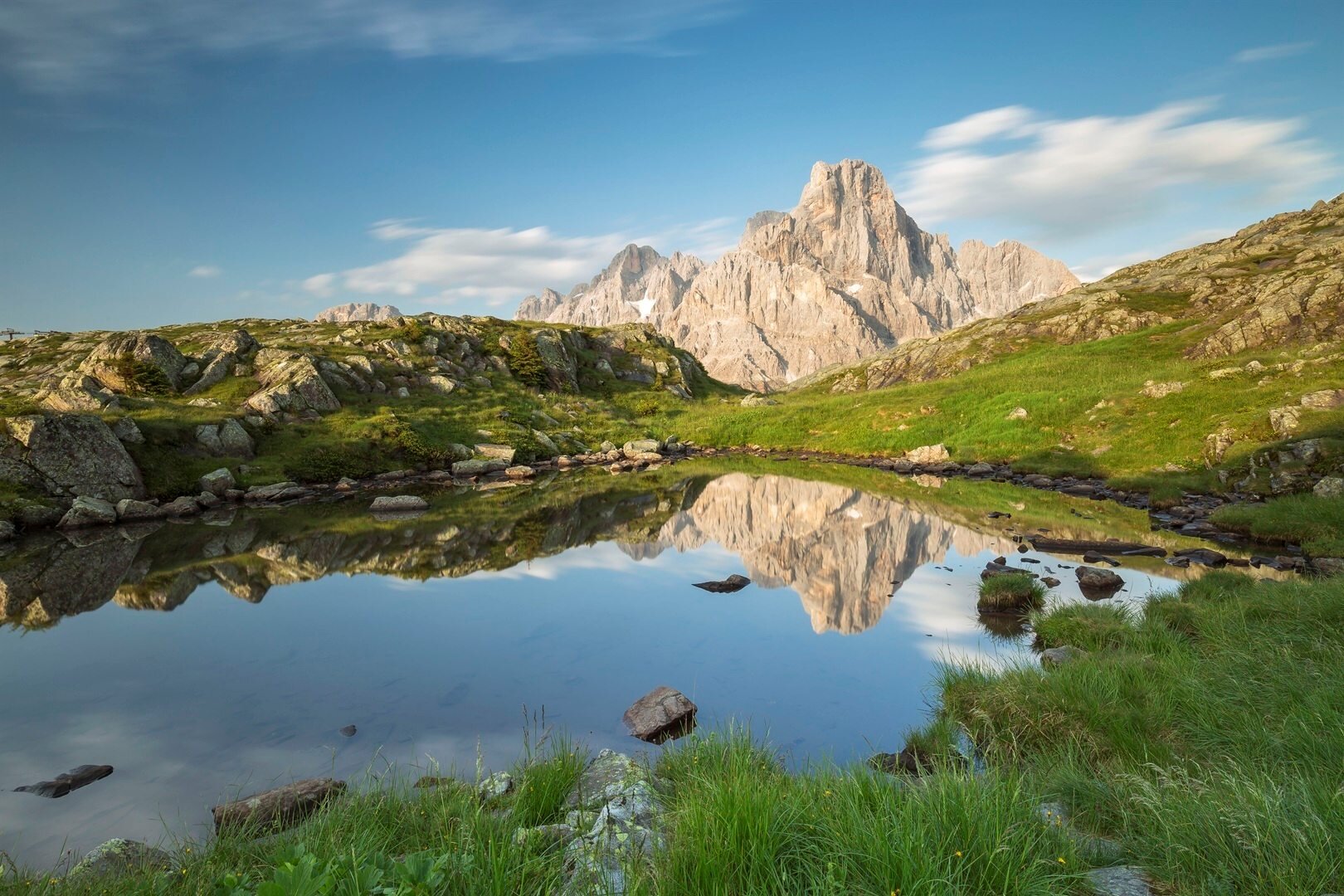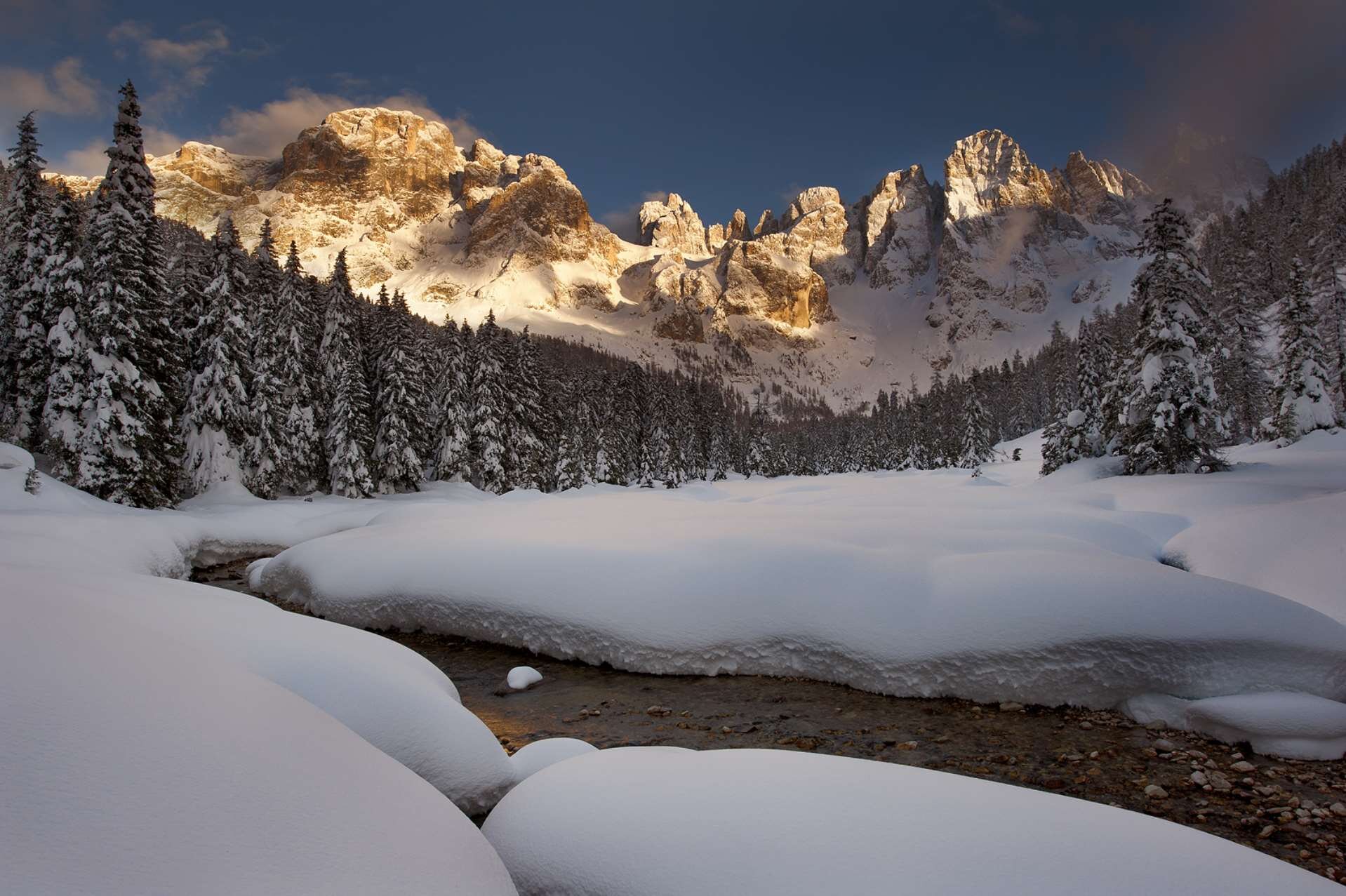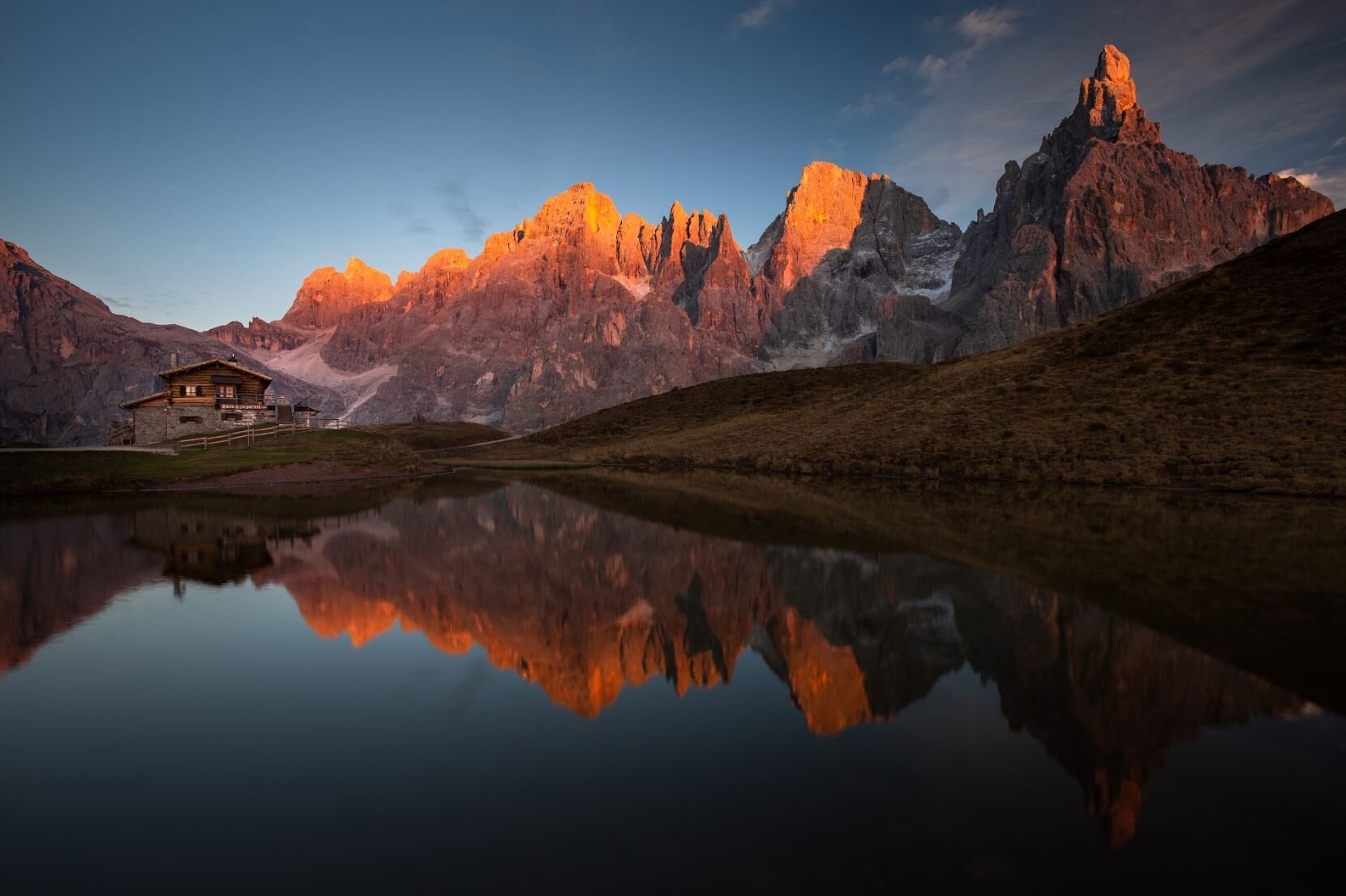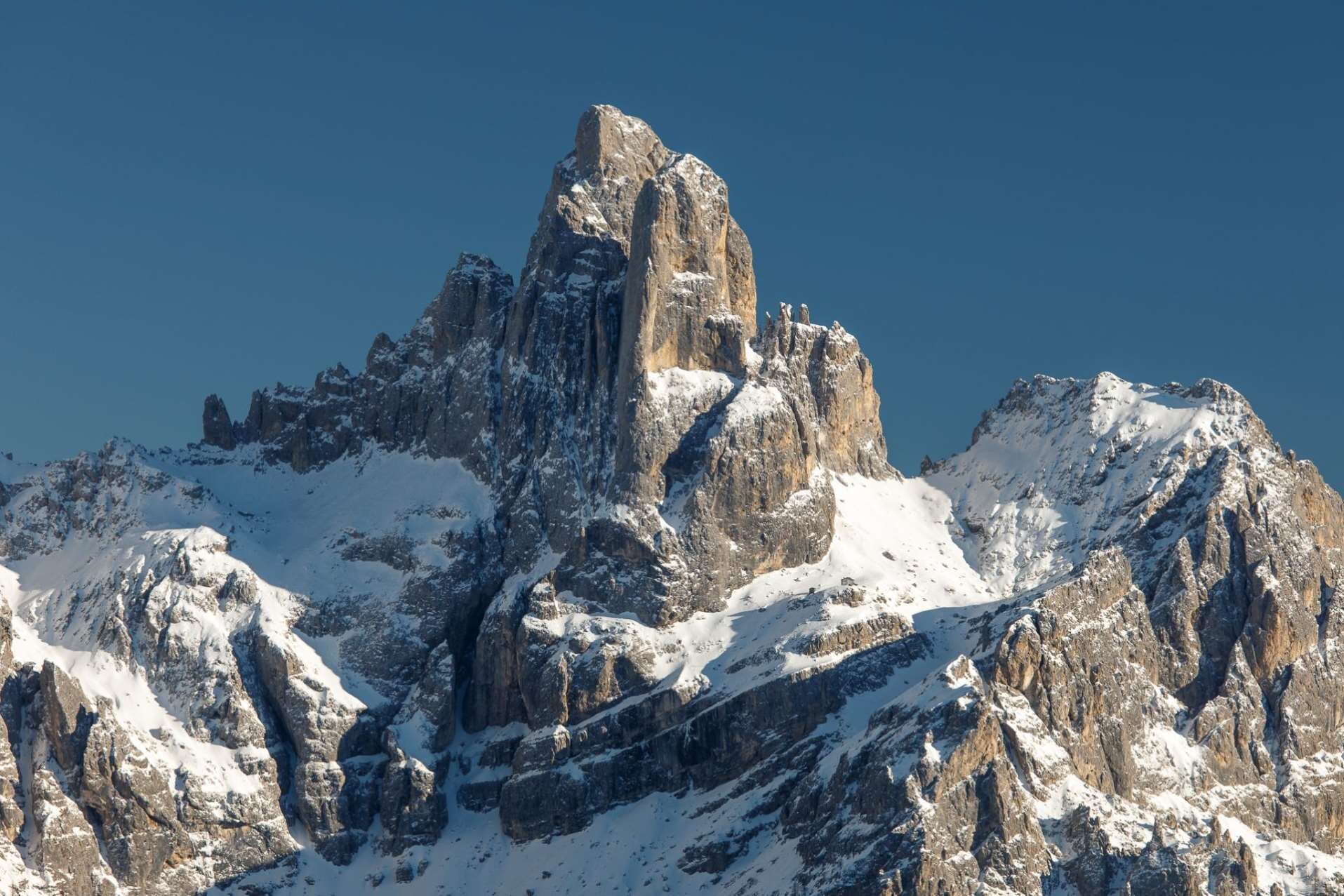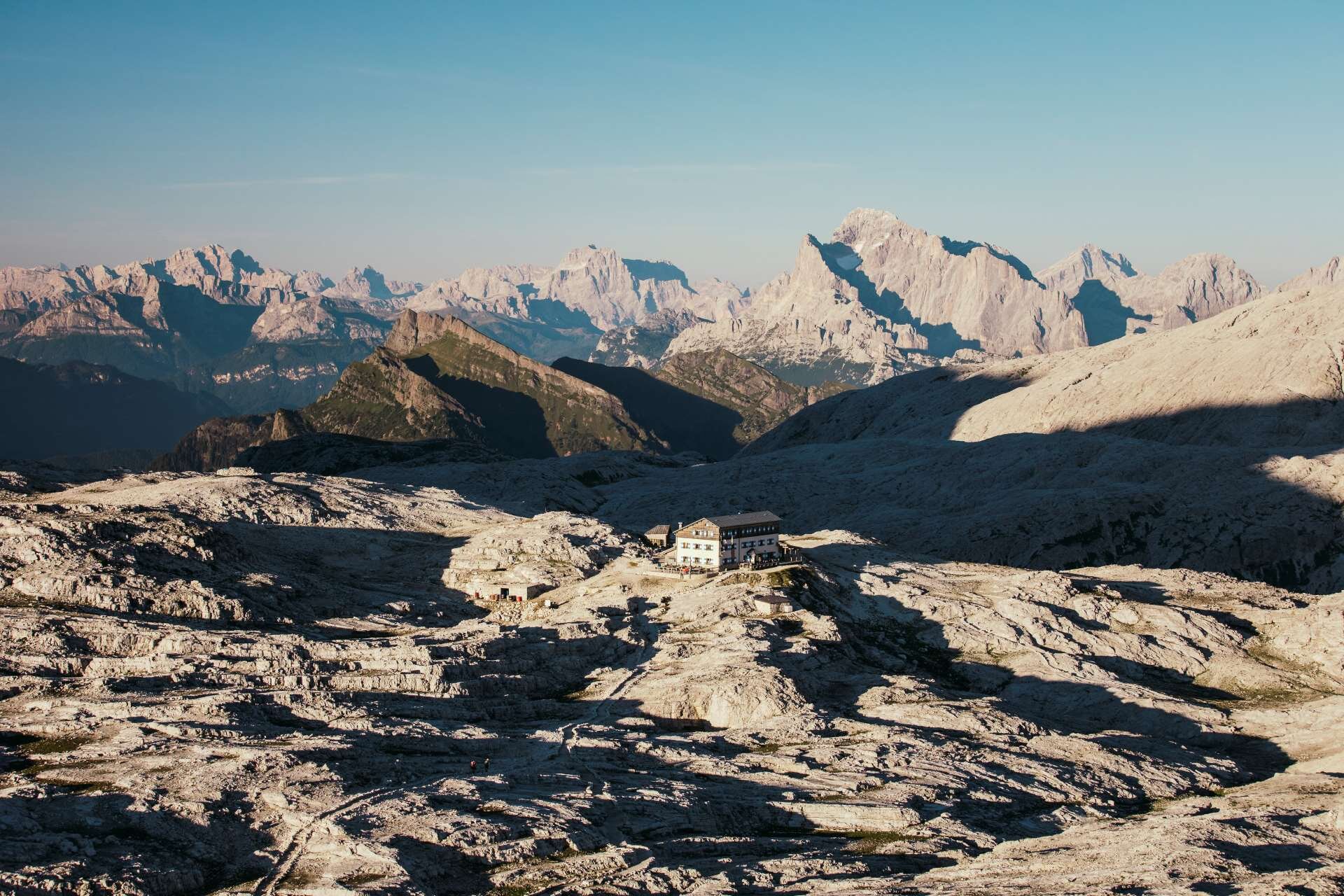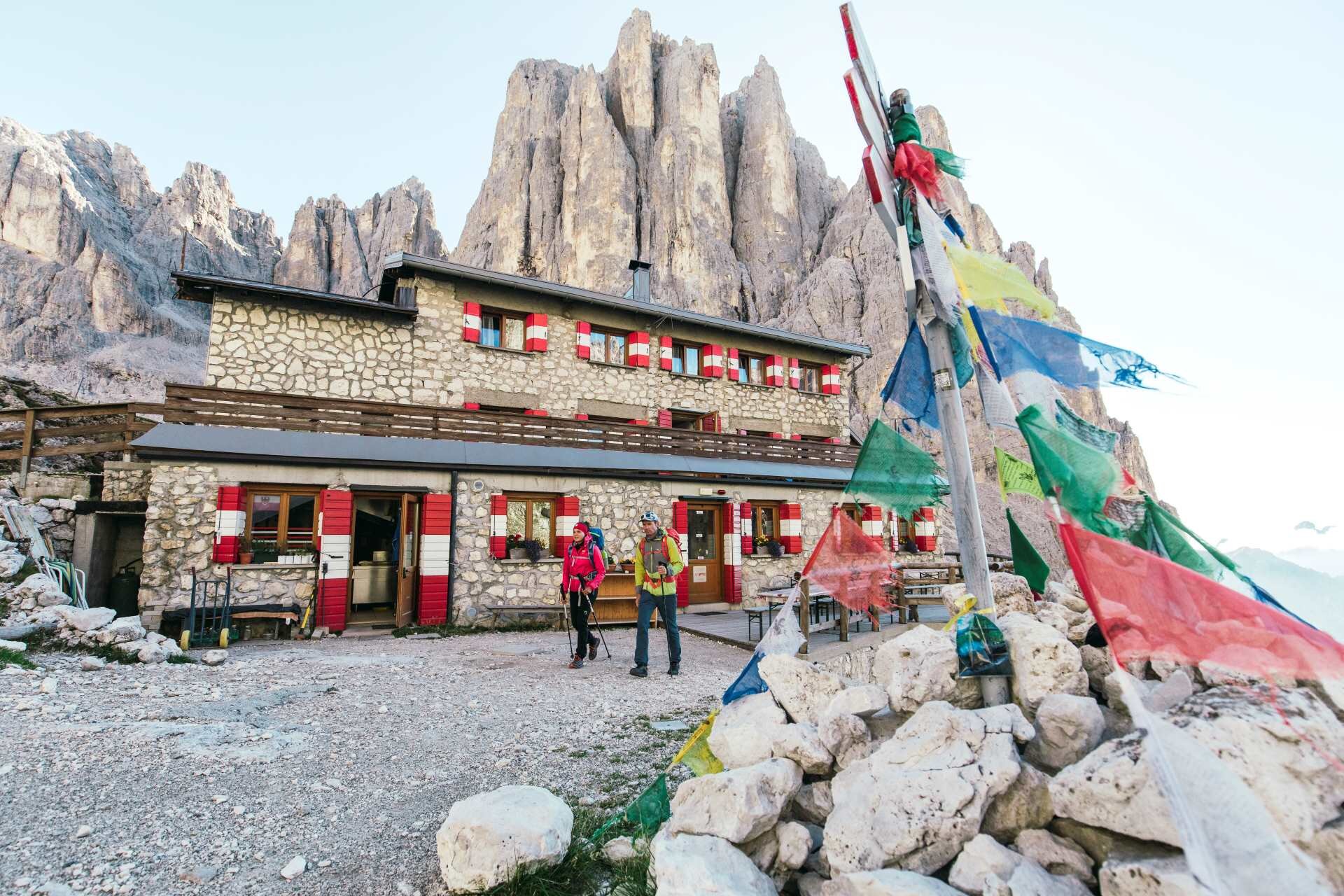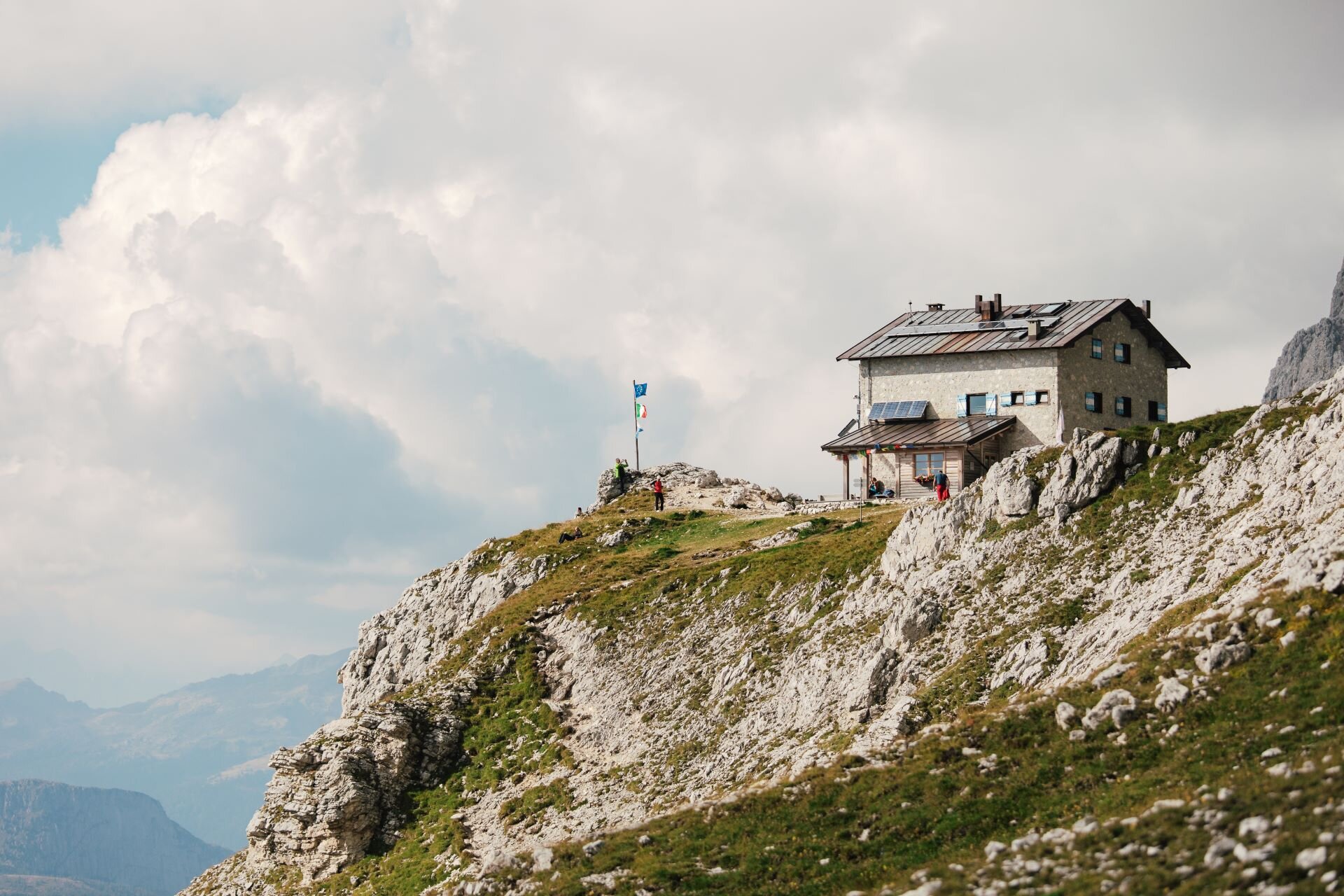Majestic, elegant, and absolutely dominant.
Wherever you turn your gaze, there they are — touching the sky, some just brushing it, others rising well above three thousand metres.
These are the peaks that form the Pale di San Martino, the largest mountain group in the Dolomites.
Wherever you turn your gaze, there they are — touching the sky, some just brushing it, others rising well above three thousand metres.
These are the peaks that form the Pale di San Martino, the largest mountain group in the Dolomites.
The famous mountains — from Cimon della Pala to Vezzana, from Rosetta to Pala, from Sass Maor to Madonna, continuing with Cima Canali and reaching the smooth face of Agnèr — form a circular crown enclosing a vast plateau of about fifty square kilometres of pure limestone rock, dotted here and there with potentillas, rampions, yellow poppies, saxifrages, gentians and edelweiss.
From Passo Rolle to San Martino di Castrozza, from the villages of Primiero to the Val Canali, through Sagron Mis, climbing up the Valles and reconnecting at the Rolle Pass — these peaks form the natural border between Primiero and Agordino. They can also be admired from the Vanoi Valley, standing as a breathtaking backdrop to Lake Calaita.
Since the 1860s, the Pale di San Martino have been a land of conquest for the first English and German climbers, and later the stage for great alpine triumphs, featuring some of the most famous “classic” routes in the Alps: the Solleder Route on Sass Maor, the Velo and Sass d’Ortiga spurs, the Buhl Route on Canali. Today, thanks to the numerous trails, lifts and mountain huts, they are also accessible to hikers who can enjoy breathtaking views from Tognola to Punta Ces, from Passo Rolle to the great Dolomite groups: Marmolada, Antelao, Pelmo, and Civetta.
Five mountain huts await those who want to find themselves at the heart of this majestic world: Giovanni Pedrotti alla Rosetta, Velo della Madonna, Pradidali, Canali-Treviso and Mulaz — all reachable by well-marked trails and via ferratas, perfectly maintained.
But what fascinates everyone — from 19th-century travellers to today’s visitors — is above all the Pale Plateau: a lunar landscape, a mysterious stone table suspended 2,700 metres above sea level.

